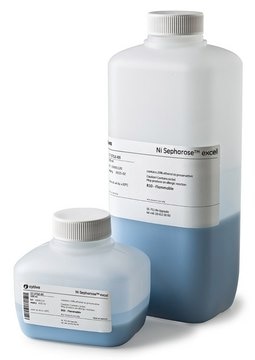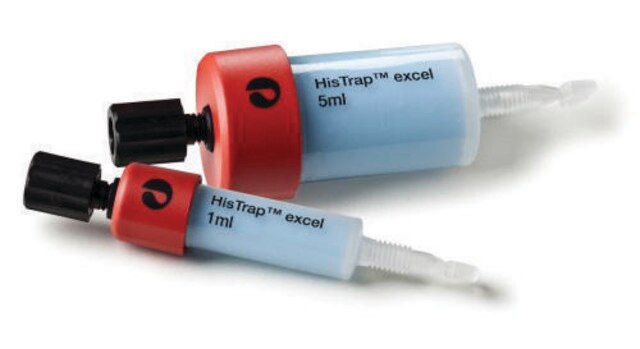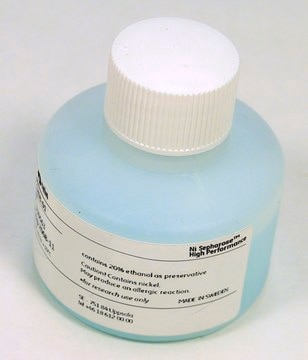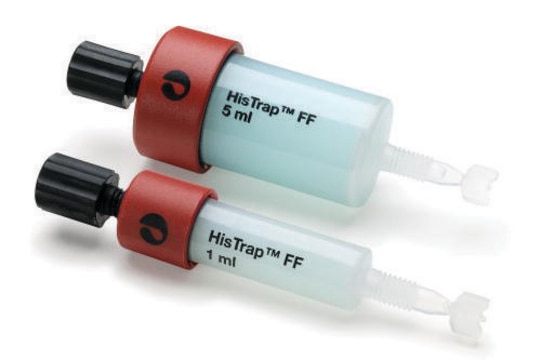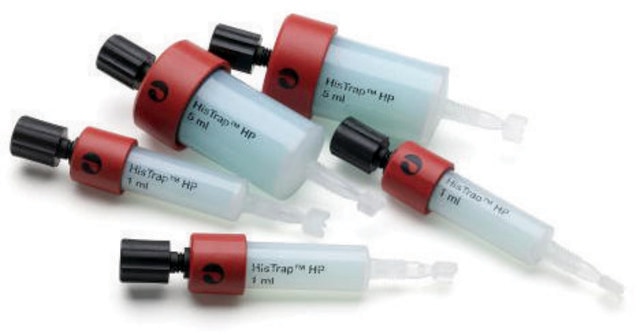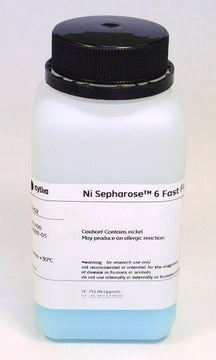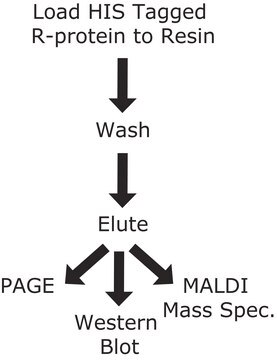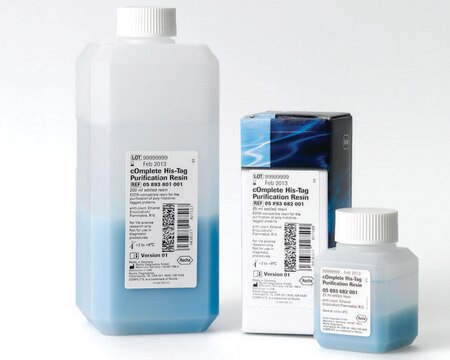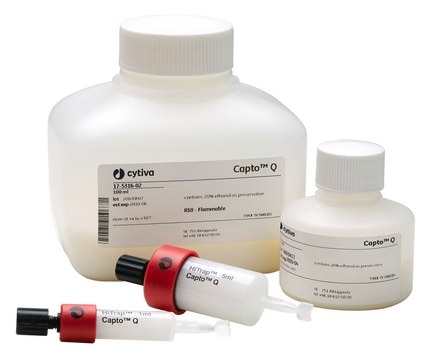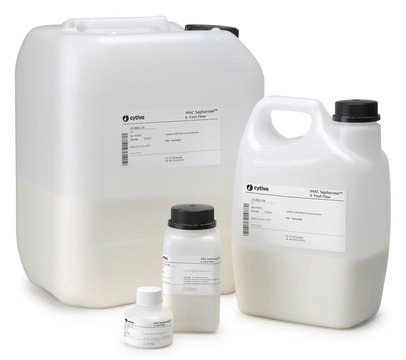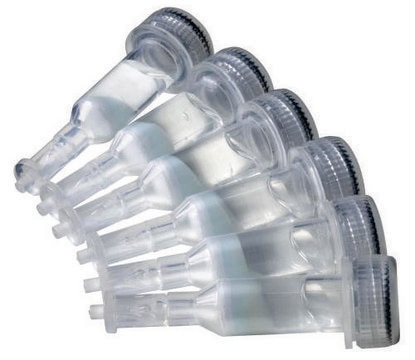GE17371201
Ni Sepharose™ Excel, 25 ML
Cytiva 17371201, 90 μm avg. part. size
Synonym(s):
Ni Sepharose™ Excel
About This Item
Recommended Products
manufacturer/tradename
Cytiva 17371201
matrix
highly cross-linked 6% agarose
avg. part. size
90 μm
cleaning in place
2-14
working range
2-12
capacity
≥10 mg binding capacity (histidine-tagged protein)()Dynamic binding capacity was tested with 0.5 mg/ml (histidine)6-tagged pure protein (Mr 43 000) in EX-CELL 420 Insect serum-free medium (capacity at 10% breakthrough) or (histidine)6-tagged protein (Mr 28 000). Column volume was 1 ml and flow rate 1 ml/min. Binding capacity is sample-dependent.)
Related Categories
General description
Ni Sepharose excel enables direct loading of samples without having to perform extensive and time-consuming pretreatment procedures. The flow properties of the medium make it excellent for purifications in a wide range of scales and allow loading of large sample volumes, enabling purification of low concentrations of target proteins at large volumes.
Features and Benefits
- Load eukaryotic cell culture samples containing secreted histidine-tagged proteins directly with retained binding capacity
- Increase target protein yield and decrease degradation through reduced and simplified sample handling
- Choose between several formats for screening and preparative purification of histidine-tagged proteins
Storage and Stability
Analysis Note
Legal Information
Signal Word
Warning
Hazard Statements
Precautionary Statements
Storage Class Code
3 - Flammable liquids
Certificates of Analysis (COA)
Search for Certificates of Analysis (COA) by entering the products Lot/Batch Number. Lot and Batch Numbers can be found on a product’s label following the words ‘Lot’ or ‘Batch’.
Already Own This Product?
Find documentation for the products that you have recently purchased in the Document Library.
Customers Also Viewed
Articles
How to optimize purification of histidine-tagged proteins using Cytiva products.
This page describes principles and standard conditions for different purification techniques of histidine-tagged proteins using Cytiva products.
This page shows the characteristics of Ni Sepharose, Ni Sepharose excel, TALON Superflow, and uncharged IMAC Sepharose products from Cytiva.
This page shows troubleshooting instructions for affinity chromatography of tagged proteins using Cytiva products.
Protocols
This protocol shows how to remove histidine tags by enzymatic cleavage using Cytiva products.
This page shows how to purify histidine-tagged proteins secreted into eukaryotic cell culture supernatants using Ni Sepharose Excel from Cytiva.
This page shows how to perform sample desalting, buffer exchange and concentration for affinity chromatography of tagged proteins.
Our team of scientists has experience in all areas of research including Life Science, Material Science, Chemical Synthesis, Chromatography, Analytical and many others.
Contact Technical Service